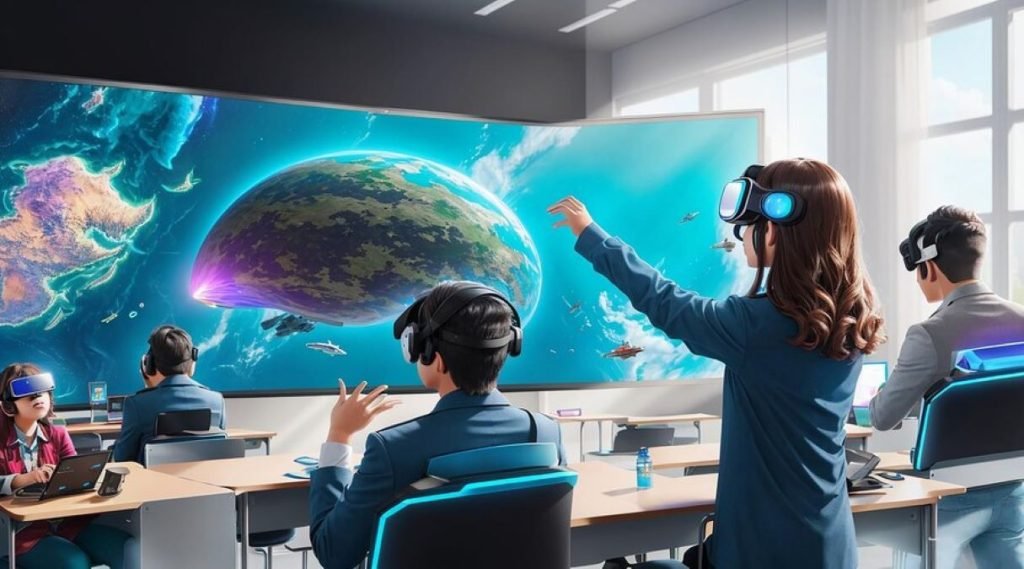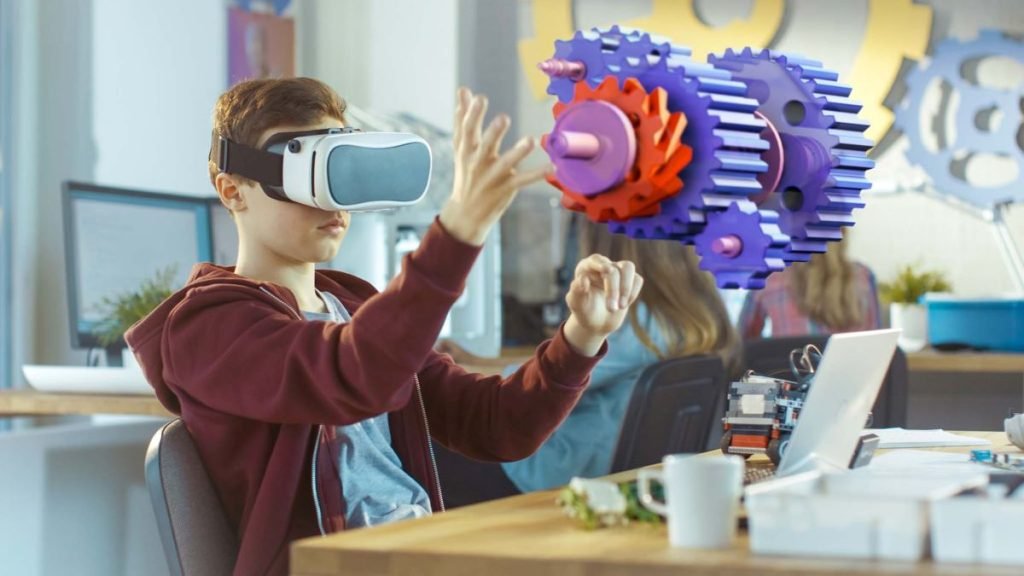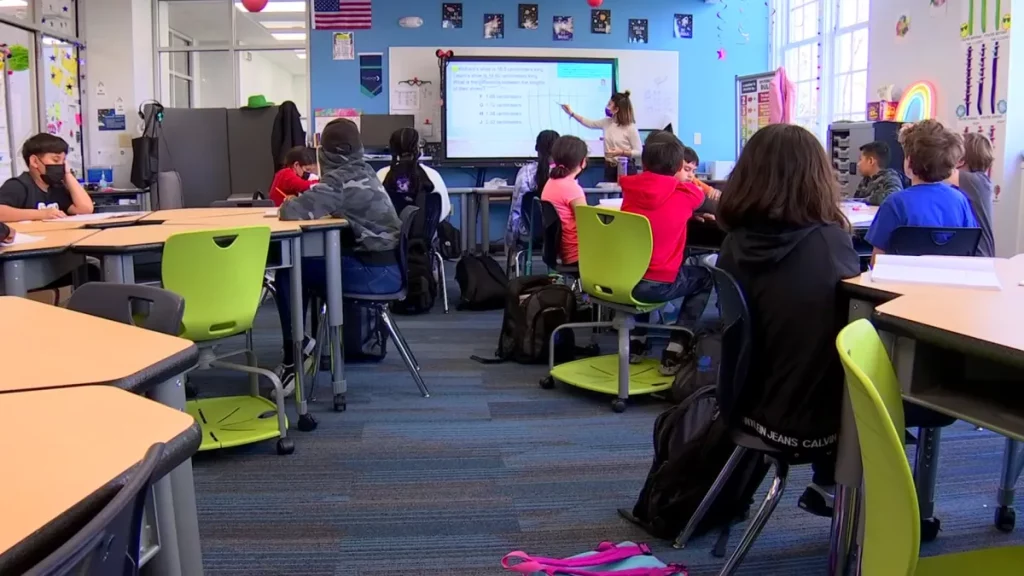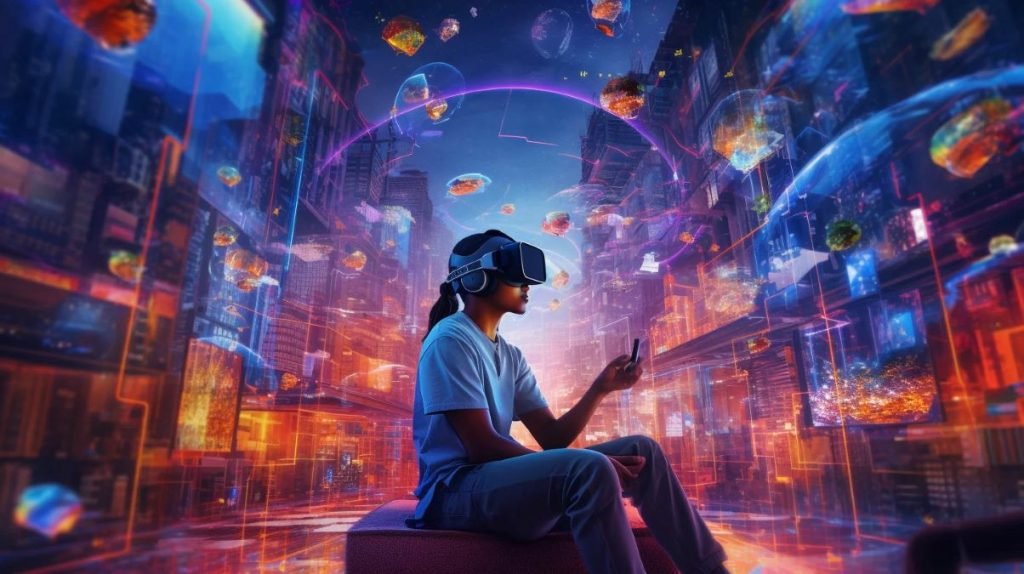Hey there, knowledge enthusiasts! Today, we’re diving headfirst into a world where the metaverse is redefining how we learn and grow with Extended Reality (XR). Whether you’re a student in a classroom or a professional in the workplace, the metaverse is a game-changer.
XR Technologies and Experiential Learning: A Perfect Match

Let’s kick things off with the power of experiential learning. This approach takes students on a hands-on journey, allowing them to apply classroom knowledge to real-world situations. And now, enter XR (Extended Reality), the dynamic duo that’s taking experiential learning to a whole new level.
Unlocking the Potential of XR Technologies
XR encompasses Virtual Reality (VR) and Augmented Reality (AR), two game-changing technologies that blur the line between the physical and digital worlds. VR creates immersive computer-generated environments, while AR overlays digital information onto the real world. Together, they’re not just cool gadgets; they’re tools that can turbocharge student engagement, critical thinking, and problem-solving skills.
The Metaverse in Action: Where Learning Knows No Bounds
As XR technologies become more accessible, institutions like Old Dominion University (ODU) are stepping up to embrace the metaverse. Various units within ODU, from the Academic Success Center to the Virginia Modeling, Analysis & Simulation Center, are championing XR in teaching and learning.

In 2020, ASC and CFD launched the “HIP-XR” initiative, a bold step into the world of XR. Faculty members were introduced to commercially available XR tools, covering both AR and VR. They embarked on a mission to design interactive and immersive learning experiences that go beyond traditional classroom boundaries.
Taking XR Beyond the Classroom
But what’s truly remarkable is how some faculty members are pushing the envelope with XR. For instance, Cathleen Rhodes, Director of Gay Cultural Studies at ODU, is using XR to take students on a journey through local LGBTQ+ history. Students investigate LGBTQ+ spaces, conduct live walking tours, and even create immersive virtual reality experiences. These projects aren’t just about relaying information; they’re about making history come alive.
Rhodes aptly describes the power of sensory experiences: “A virtual tour cannot bring these spaces back, but it can provide an opportunity to experience them again.” XR isn’t just a tool; it’s a bridge to the past, making history accessible to a wider audience.
Interdisciplinary Collaboration: Bridging Knowledge Gaps
Rhodes’ projects also demonstrate the beauty of interdisciplinary approaches. Game Studies students are collaborating on these immersive XR experiences, enriching their educational experiences and contributing to the local community.
John Shull, the Assistant Director of Technology for Collaborative Spaces at VMASC, plays a pivotal role in connecting students with the project team. He describes how Unity3D and version control practices are used to create XR experiences. Students not only design 3D objects and spaces but also gain valuable experience with technologies commonly used in the gaming industry.
Extended Reality (XR): A Gateway to Experiential Learning and Beyond
In summary, XR technologies are reshaping the educational experience, offering thrilling opportunities for experiential learning. They create immersive and interactive environments that help students gain real-world experiences and develop practical skills that extend beyond the classroom. It’s not just about theoretical knowledge; it’s about learning by doing.

As XR technologies become more accessible and continue to evolve, the metaverse is set to become an essential component of education and training. It’s a ticket to real-world experiences, offering students a chance to step into history, interact with their surroundings, and develop skills that will propel them to success, both academically and professionally.
So, whether you’re a student embarking on a journey of discovery or a professional seeking to enhance your skills, remember that the metaverse is your gateway to a world of immersive learning and limitless possibilities. The future is here, and it’s extraordinary.
The Hybrid Learning Evolution: Where XR Meets the Classroom
Now, let’s shift our focus to the world of hybrid learning. The COVID-19 pandemic showed us that remote learning can work, and it’s here to stay. But what’s truly exciting is the blend of physical and virtual learning experiences, often referred to as hybrid learning.
Roblox: Pioneering Hybrid Learning in the Metaverse
Take Roblox, for example. This metaverse platform is leading the charge, offering virtual classrooms that make remote learning experiences come alive. These virtual classrooms aren’t limited to real-world scenarios; they can take students to entirely fantastical realms.
In Roblox, you’ll find millions of user-generated worlds that serve as educational settings. From historical recreations to physics simulations, the possibilities are endless. Students and teachers can log in from anywhere, be it the comfort of their homes or the familiar classroom, opening the doors to a new era of remote learning.
High School Dallas Hybrid Prep: A Glimpse into the Future
In the United States, high school Dallas Hybrid Prep is already embracing the hybrid model. Students split their time between traditional classroom learning and the STEMuli educational metaverse platform. This innovative approach allows students to access the platform from home, interact with their teachers, and complete assignments that feel more like interactive games.

But here’s the secret sauce – XR technologies are at the heart of this transformation. They’re turning passive learning into active exploration. Whether it’s through 360 VR videos or interactive 3D experiences, students are no longer passive recipients of information. They’re active participants, engaged with course content in ways they’ve never imagined.
XR in the Workplace: A New Age of Training
Now, let’s transition to the corporate world, where XR technologies are rewriting the playbook for workplace training.
The Hybrid Approach in the Workplace
Just as hybrid learning transformed education, it’s making its way into the corporate training landscape. Employers are blending virtual classroom training with hands-on experiences in the physical workplace.
Virtual Simulations: A Glimpse into the Future of Workplace Training
But there’s more to the story. XR technologies are introducing a new dimension to workplace learning through virtual simulations. In the metaverse, employers have the power to design custom training scenarios, no matter how complex or hazardous. It’s a world where customer service training takes place in a virtual store with virtual customers, and health and safety lessons unfold in a virtual world filled with risks.

Let’s take a real-world example: BP, the energy giant, used VR to train employees at its oil refinery in Hull, England. They partnered with Igloo Vision to create a VR simulator inside a six-meter igloo. Employees could explore a highly detailed replica of the plant and practice critical safety tasks, all within a safe, virtual setting.
In this metaverse, the possibilities are limitless, and training scenarios become experiences that are otherwise too challenging or dangerous to recreate in the physical world.
The Future of Learning and Training: Boundless Possibilities
In summary, the metaverse is not just changing how we learn and train; it’s redefining the essence of education and workplace development. It’s making knowledge an adventure, accessible to anyone, anytime, and anywhere.
The metaverse is where the world becomes your classroom, and the opportunities are infinite. It’s time to dive in, explore, and experience the magic of learning and training in the metaverse.

